
Summer is by far the most popular season for fly fishing in Montana. With rivers flowing at ideal levels for float fishing trips but also low enough for walk-and-wade fishing, the cat has been out of the bag for decades on the fly fishing opportunities in southwest Montana during July and August. Sure, anglers can fish tandem nymph rigs and pad the numbers but the reason most of us got into trout fishing was to see a trout rise to a fly on the surface of the water. Enter in grasshoppers and the exciting fishing that can happen when the right pattern gets the right drift and a hungry trout rises to the surface to sip, snarfle, or swallow your grasshopper. But none of that can happen without choosing the right fly. So...we polled several of our longtime Montana fly fishing guides for their favorite grasshopper pattern. Here are the favorite grasshopper patterns of our top Montana fly fishing guides.
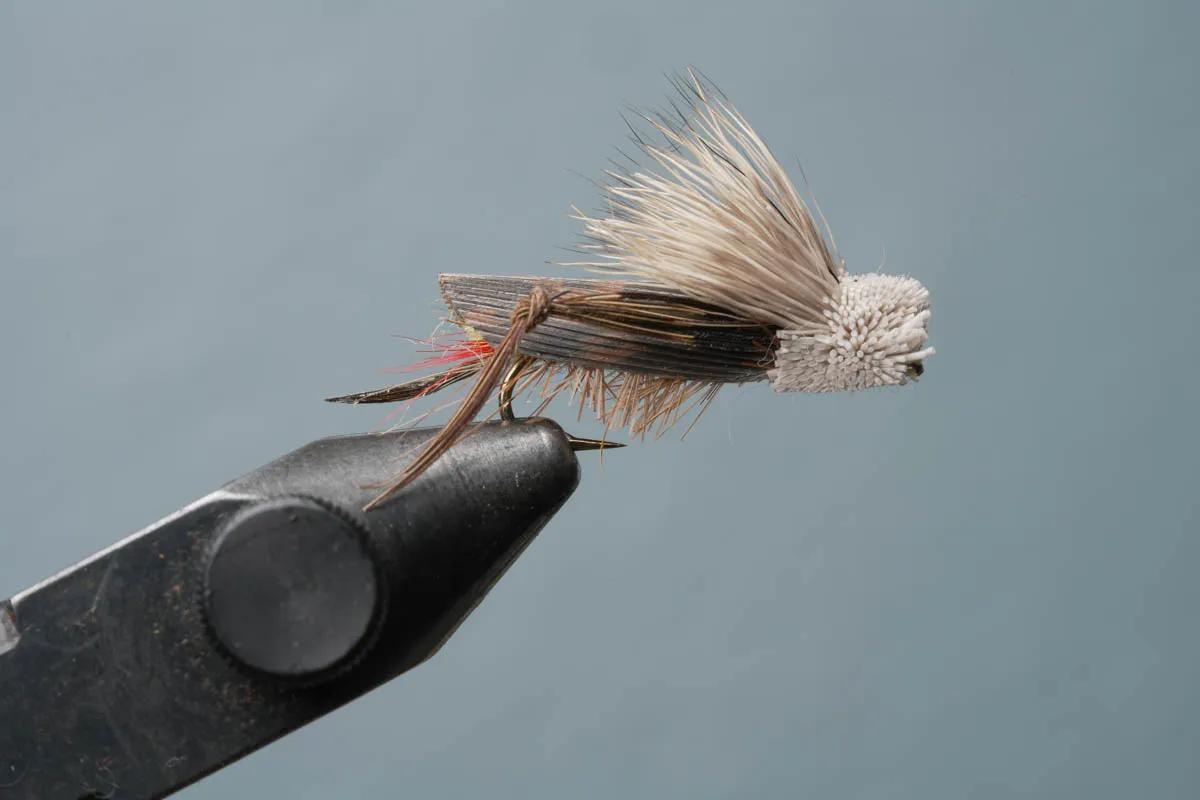
Dave's Hopper
Created by legendary angler Dave Whitlock in the 1950s, this pattern combines some of the best elements of every dry fly...plus great legs. Whitlock used elements from Joe’s Hopper and the Muddler Minnow, featuring a spun deer-hair head, yellow yarn body, brown hackle, a mottled turkey wing, knotted hackle-stem legs, and a red deer-hair tail. This is a well floating dry fly that works great for fishing droppers or as a single dry fly. Many anglers love to fish a Dave's Hopper when prospecting with hoppers because the fly's spun hair head lands with a distinct plop that can entice a strike. This fly is also a very good fly to use when trout are looking for hoppers that are being twitched--mimicking an injured hopper or a distressed hopper. It floats a dropper as well so be sure to have some Dave's Hoppers in your vest or box during late summer.

Heneberry Hopper
About as life-like as any hopper on this list, the Heneberry Hopper is a great hopper pattern for fishing it as a single dry fly or with a second dry fly. Created by Ken Keller, this pattern is tied with very supple micro-legs, allowing the legs to slowly twitch and move on the water's surface. The entire body is a foam so it is durable and can hold up well throughout the day. With a poly wing and a contrasting color second foam wing, the Heneberry Hopper is easy to see. Many Montana fly fishing guides will use this hopper on calmer waters like the Missouri, Beaverhead, Yellowstone National Park's Slough Creek or on one of the Paradise Valley spring creeks. Because this hopper is sparsely tied compared to some other hoppers on this list, you can get away with fishing a lighter tippet. Droppers work ok with this hopper, but there are other hoppers that work better when fishing a hopper-dropper two-fly rig.
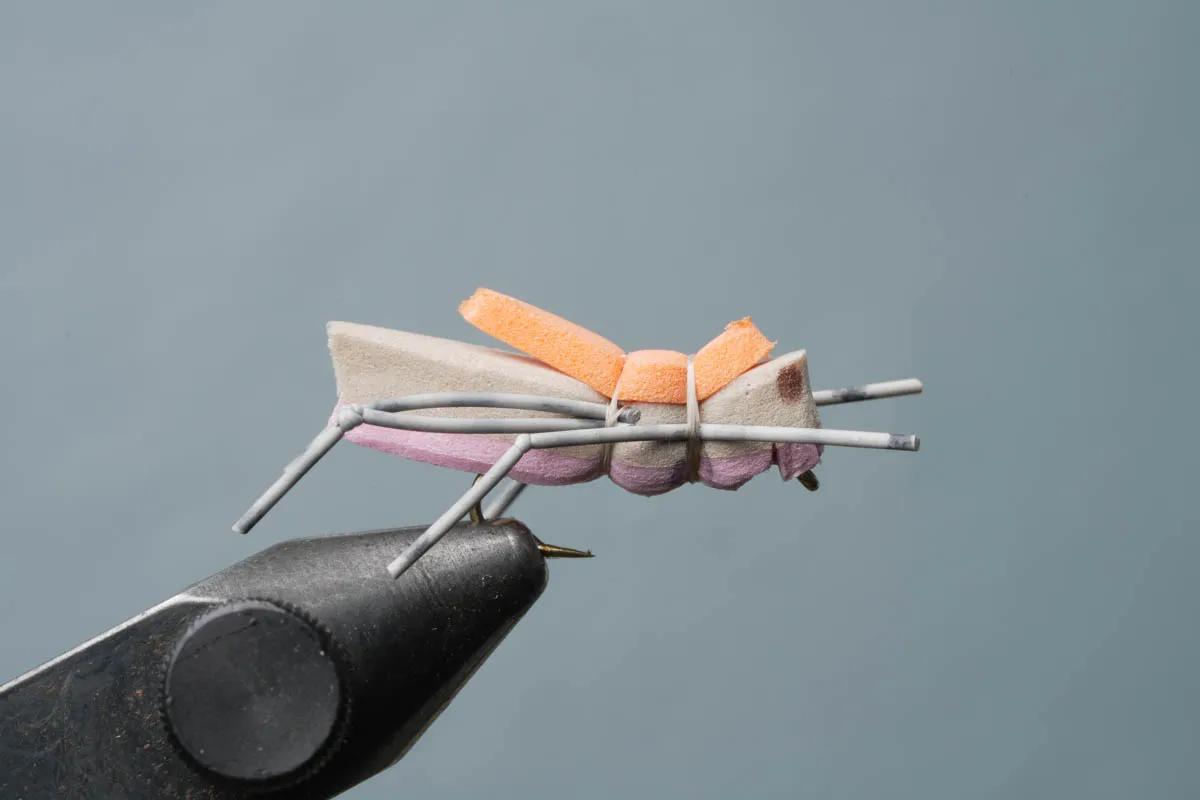
Morrish Hopper
Created by one of the more influential fly tyers and anglers of the past several decades, Ken Morrish, this hopper is another must-have. Most Montana fly fishing guides agree this fly should only be fished as a single dry fly, except in rare occasions with bigger sizes. The main reason it doesn't work well with droppers is the main reason it is such a successful fly--its legs are so supple and lifelike they can easily tangle with a dropper tippet. The body is cut with a special machine or very patiently with a razor blade--this ensures the underneath profile (that which a trout sees) looks as real as possible. Most of the best Morrish Hoppers are tied with three contrasting colors, topped off with a hi-vis foam on the back. Like the other hoppers on this list, you really shouldn't hit the water without some of these in your pack or vest.
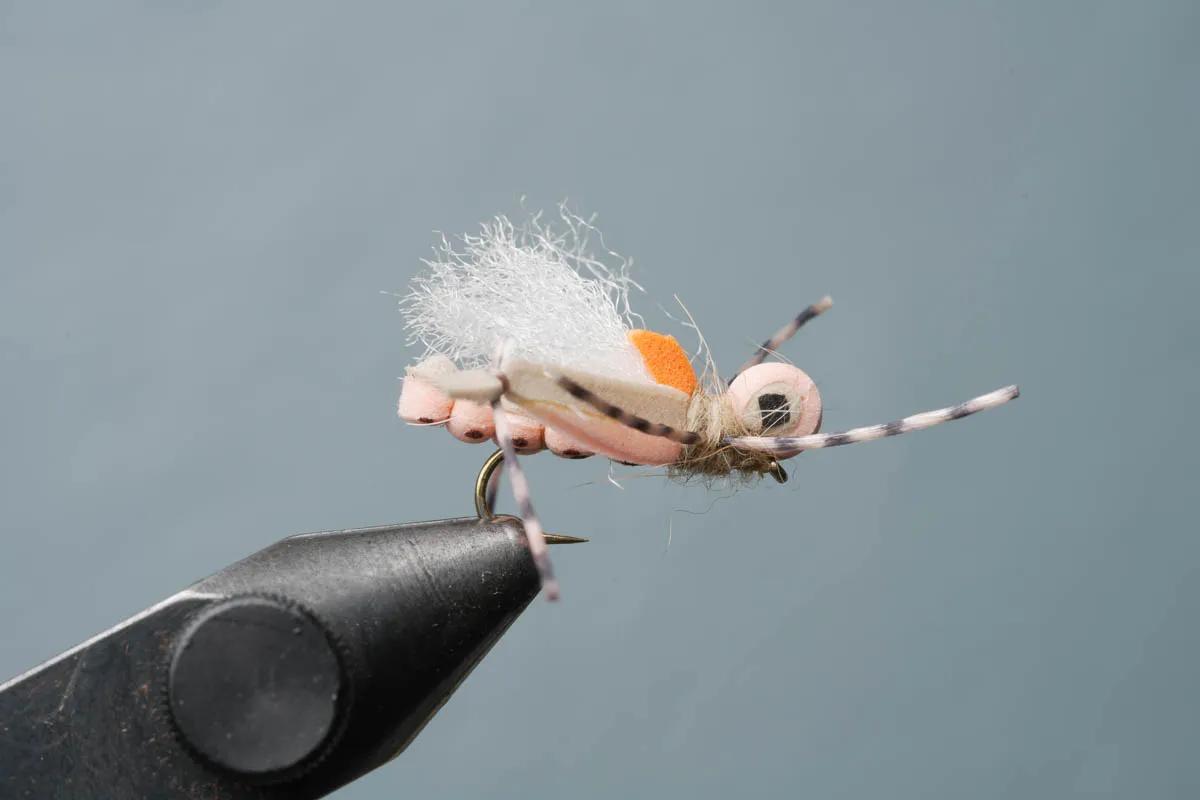
Thunder Thighs
Born on the rivers of southwest Montana, this pattern was created with our Montana style of fishing in mind. Ideal for fishing with a dropper fly, this pattern works great on fast rivers like the Madison or on the long riffles of the Yellowstone. Eric Paramore, a longtime Montana fly fishing guide, wanted a pattern with legs that truly looked like hopper legs--thick in the thighs and tapered to the feet. This is the only pattern on this list with legs that actually look like real hopper legs. An added bonus, yet often overlooked component of this pattern, is the over-sized eye. With visibility and floatability covered very well with this pattern, anglers wanting to fish hopper-dropper rigs but also have flexibility to fish a single fly, Thunder Thighs checks both boxes exceptionally.
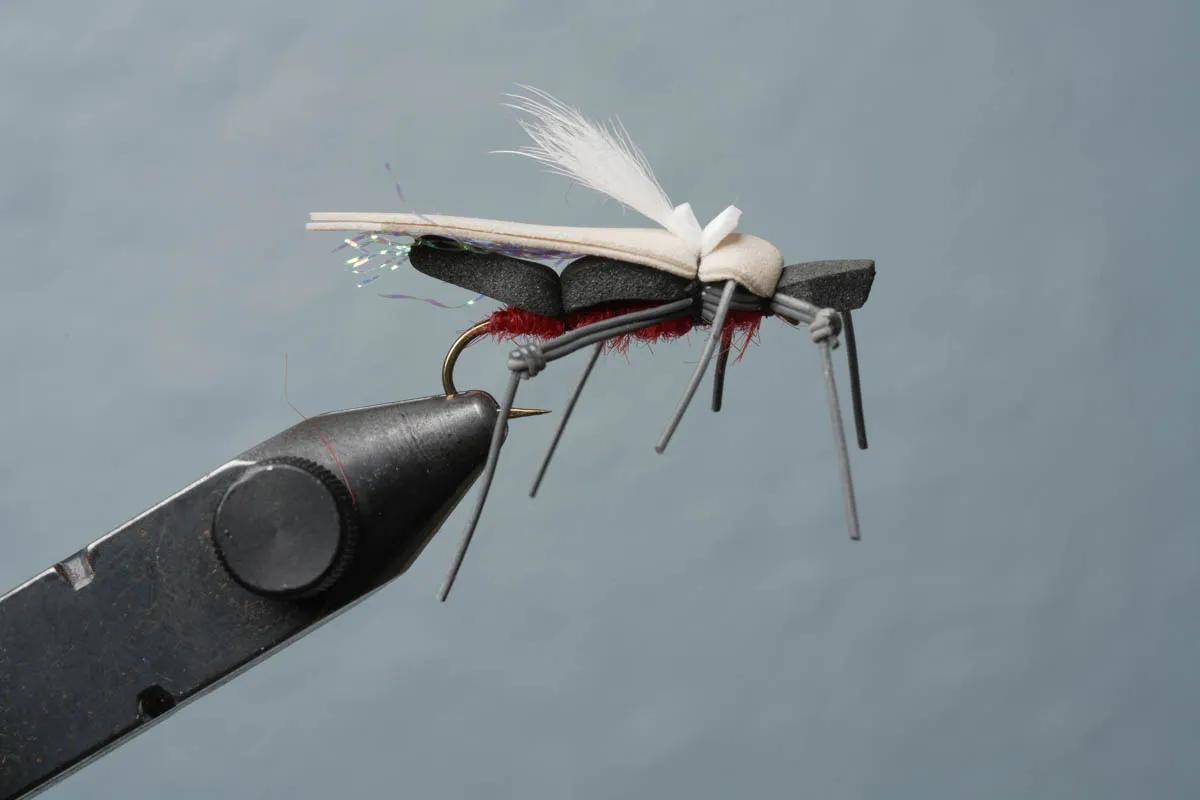
Water Walker
Originally created by Will Dornan as stonefly, this fly also works great as a grasshopper. Although this fly appears complex, it is actually a very simple fly to tie and to fish. The key component of the Water Walker is a very thin overwing tied directly to the body. Unlike many other patterns tied with heavy poly wings, Dornan went the opposite direction with the wing and tied it as thin as possible and that is the deal-maker. The thin overwing often moves in the wind or even in a gentle breeze adding an irresistible appearance to a hungry trout. With other juicy components such as life-like legs, a segmented body, and ice dubbing for the underbody, the Water Walker is a great fly to have when the fish are looking up for terrestrials. As reported by several Montana fly fishing guides, the Water Walker doesn't work great as the floating fly in a two-fly dry dropper rig because the overwing is so light and supple the fly can land upside down.
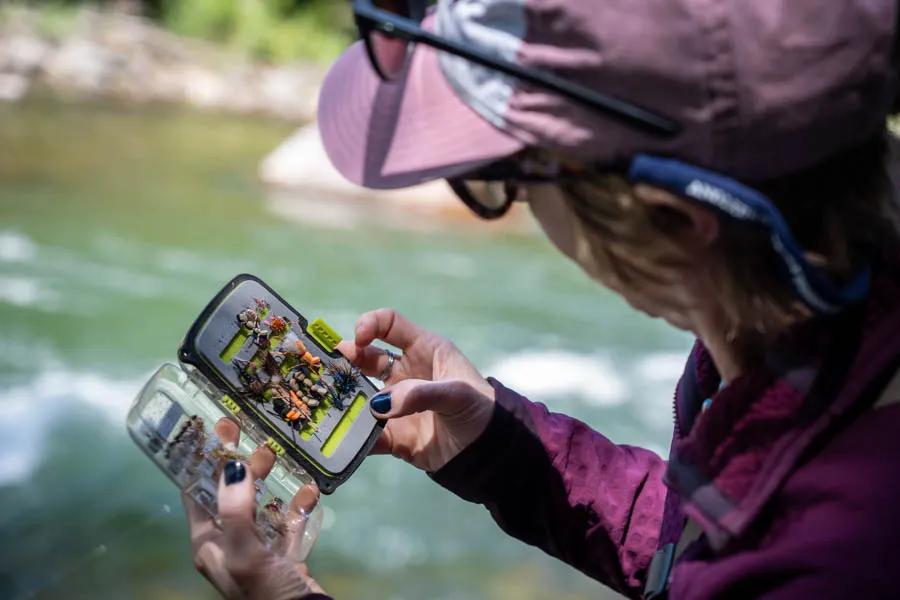
With many of Montana's best rivers and creeks for fly fishing flowing through agricultural valleys, fly fishing with grasshopper patterns is effective and fun. These fertile valleys provide an ideal habitat for large populations of grasshoppers. Once the large scale summer hatches of various species of caddis, stoneflies and mayflies have largely run their course, trout begin to become more opportunistic. The reduction in aquatic hatches tends to occur just as hoppers gain their wings and at the same time that grasshoppers are abundant and trout opportunistic. Whether you are twitching your grasshopper, dead-drifting it, or fishing it with a dropper, be sure to use anyone of these 5 Best Hoppers for Fly Fishing in Montana.
